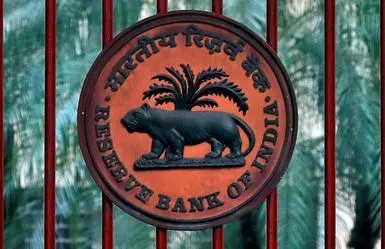The recent decline in the inter-bank call rate below the repo rate has sparked speculation and raised eyebrows among economists and financial analysts. This unexpected development, occurring on February 5, 2024, suggests a potential shift in monetary policy dynamics and has implications for the broader economic landscape.
Firstly, it’s crucial to understand the significance of both the inter-bank call rate and the repo rate. The inter-bank call rate is the interest rate at which banks lend and borrow funds from each other overnight. On the other hand, the repo rate is the rate at which the central bank lends money to commercial banks for short periods, typically overnight, against government securities. The repo rate is a key tool used by central banks to control liquidity and inflation in the economy.

SOURCE:- NEWS18
The fact that the inter-bank call rate has fallen below the repo rate indicates unusual market conditions. Traditionally, the inter-bank call rate tends to be slightly higher than the repo rate, reflecting the inherent risk and uncertainty associated with lending between banks. However, when the inter-bank call rate drops below the repo rate, it suggests that banks are willing to lend to each other at a lower interest rate than what they could obtain from borrowing directly from the central bank.
SOURCE:- CNBC NEWS 18
This situation can arise for several reasons. One possibility is excess liquidity in the banking system, where banks have surplus funds available for lending. Another factor could be a lack of attractive investment opportunities, prompting banks to seek alternative avenues for deploying their funds. Additionally, changes in regulatory requirements or monetary policy expectations can influence banks’ borrowing and lending behavior.
The decline in the inter-bank call rate below the repo rate has led to speculation about a potential shift in monetary policy. Some analysts interpret this as a signal that the central bank may be considering a reduction in the repo rate to stimulate economic activity and encourage lending. A lower repo rate would make it cheaper for banks to borrow from the central bank, potentially leading to increased credit flow and investment in the economy.
However, others caution against reading too much into this single data point. While the divergence between the inter-bank call rate and the repo rate is notable, it may not necessarily indicate an imminent change in monetary policy. Central banks carefully assess a wide range of economic indicators and factors before making decisions on interest rates.
the decline in the inter-bank call rate below the repo rate on February 5, 2024, has sparked speculation and debate about potential shifts in monetary policy. While this development raises questions about market dynamics and liquidity conditions, it is essential to await further guidance from central banks and monitor additional economic data before drawing firm conclusions about future policy directions.
Share your views in the comments

